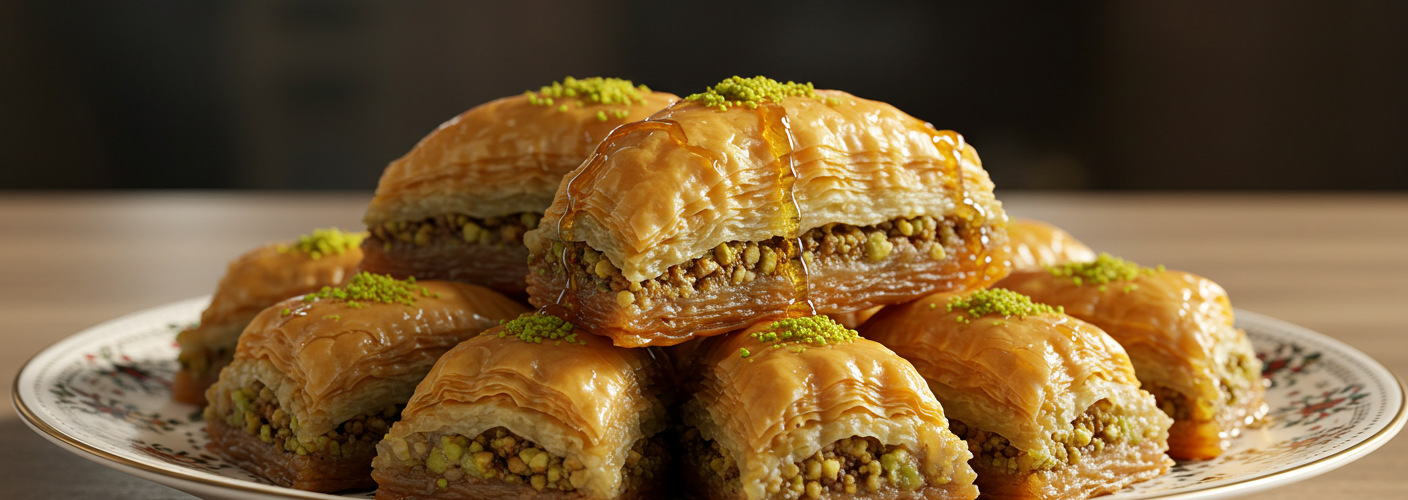Baklava, a beloved dessert that has captivated taste buds around the world, is a dazzling showcase of culinary artistry, originating from the kitchens of the Middle East and Mediterranean regions. This scrumptious treat is defined by its delicate layers of filo pastry filled with a variety of nuts and generously drizzled with syrup or honey, resulting in a dessert that’s both indulgent and refined.
At its core, baklava is a perfect harmony of textures and flavors. The filo pastry, known for its paper-thin sheets, provides a light, crispy crunch that contrasts beautifully with the rich, nutty filling. Traditionally, walnuts, pistachios, or almonds are used, each adding a distinct taste while still complementing the sweetness of the syrup.
The preparation of baklava is an art form in itself. It begins with careful layering—the pastry sheets are painstakingly spread out, brushed with melted butter to enhance their flavor and achieve that coveted golden hue when baked. A layer of finely chopped nuts sprinkled generously throughout serves as the heart of the baklava, delivering a burst of flavor with every bite. This process is repeated, creating several layers that culminate in a deliciously rich pastry.
The baking process transforms the fragile sheets and nut filling into a beautifully cohesive dessert. Once the baklava is finished, it’s cut into diamond or square shapes, allowing for easy serving. The final touch is the addition of syrup, which is usually made from a blend of sugar, water, and a hint of lemon juice, or honey, poured over the warm baklava. This syrup seeps into the layers, adding moisture and sweetness, which balances the richness of the nuts.
Serving baklava is as much a tradition as making it. Typically enjoyed alongside a cup of strong coffee or tea, baklava is often featured in celebratory meals, family gatherings, and religious festivities, symbolizing togetherness and joy. Its presence at the table draws people in, inviting them to savor each mouthful of sweet, flaky goodness.
Baklava also varies regionally; for instance, Greek baklava is known for its generous use of honey and cinnamon, while Turkish baklava often features more pistachios and has a more subtle sweetness. Each country has its own secret recipes, techniques, and variations, ensuring that no two baklavas are exactly alike.
While baklava is delightfully indulgent on its own, it can also be customized to fit personal tastes or dietary preferences. For those looking for gluten-free options, alternative flours can replace traditional flour for the dough, and the nut fillings can be adjusted according to availability or preference. This adaptability allows baklava to be part of modern culinary explorations while still respecting its rich traditions.
In conclusion, baklava is more than just a dessert; it’s a sweet celebration of heritage, skill, and love. Each piece tells a story of patience and precision, reflecting the cultural tapestry from which it comes. Whether you are a longtime fan or trying baklava for the first time, its exquisite layers, nutty filling, and honey-kissed sweetness are sure to leave you enchanted. So why not indulge yourself? Treat yourself to a slice of this delectable dessert and experience the magic of baklava.




Add comment